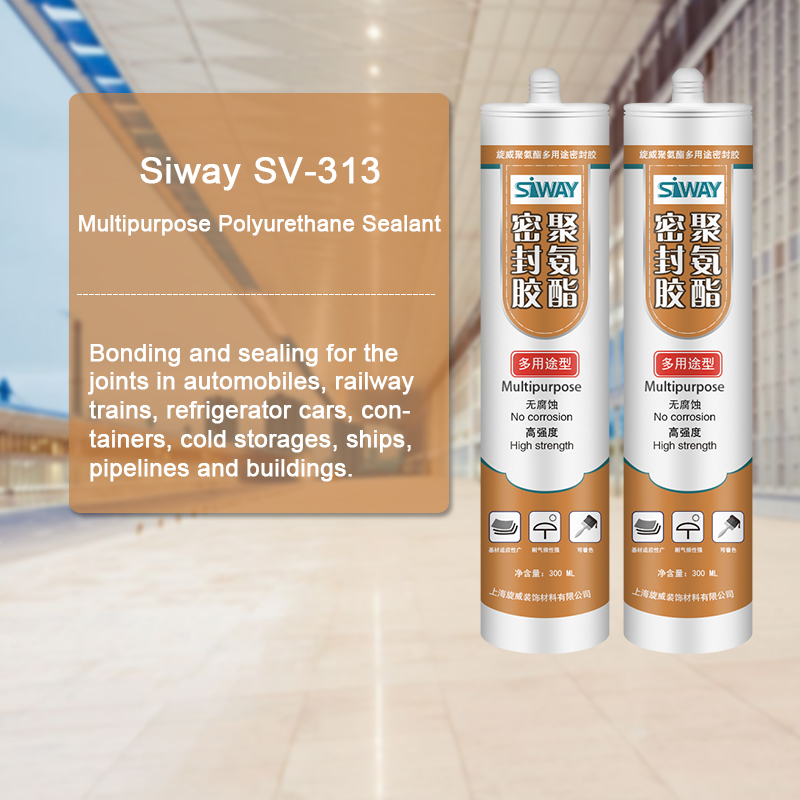Manufacturer for Siway MG PU FOAM to Kenya Factory
Short Description:
Description MG PU FOAM is the expansion, moisture curing, has the strong cohesiveness, elastic foam obturator structure; Save work to save time, reduce waste; High bond strength; Bubble can stick in the concrete, wood, metal, plastic, such as base material surface, but not including teflon, silicon resins; Key Features 1. Noise silencing effect 2. Strong bonding strength 3. Water & weatherproof 4. Primerless adhesion to most building materials Basic Application 1.Doors and Windows and...
Our target is to consolidate and improve the quality and service of existing products, meanwhile constantly develop new products to meet different customers' demands for Manufacturer for Siway MG PU FOAM to Kenya Factory, Contact with us today! We are ready for the market service now!
Description
MG PU FOAM is the expansion, moisture curing, has the strong cohesiveness, elastic foam obturator structure; Save work to save time, reduce waste; High bond strength;
Bubble can stick in the concrete, wood, metal, plastic, such as base material surface, but not including teflon, silicon resins;
Key Features
1. Noise silencing effect
2. Strong bonding strength
3. Water & weatherproof
4. Primerless adhesion to most building materials
Basic Application
1.Doors and Windows and wall body between the gap filling sealing, fixed bond
2.Language lab, studio, etc when decorating, gap to fill
Technical data sheet
|
Project |
Value |
||
|
Density, Kg/m³,Not less |
10 |
||
|
Thermal conductivity,35℃,W/(m·K) no more than |
0.050 |
||
|
Dimensional stability(23±2)℃,48,h no more than |
5 |
||
|
Operating temperature |
-10~+35℃ |
||
|
Optimum operating temperature |
+18~+25℃ |
||
|
Temperature range(After curing) |
-35~+80℃ |
||
|
Tensile bond strength kPa Not less |
Aluminum plate |
Standard condition,7d |
80 |
|
Immersion,7d |
60 |
||
|
PVC plate |
Standard condition,7d |
80 |
|
|
Immersion,7d |
60 |
||
|
Cement Plate |
Standard condition,7d |
60 |
|
|
Shear strength,kpa,Not less |
80 |
||
|
Foam expansion ratio,Not less |
Standard value-10 |
||
Certification
JC 936-2004
Color
White
Package
750ml in Bottle * 12 per box
Shelf life
12 months
Note
If you want the TDS or MSDS or other details, please contact with our sales person.
Energy saving tips/ Simple Winter life hacks anyone can do to keep Warm and Save money on electricity by cutting your Electric Hydro Bill. Here are some tips to help you save energy, save money and do your part for the environment.
Try these easy, low-cost or no-cost energy saving tips
Furnace
Keep your furnace clean, lubricated and properly adjusted with annual maintenance. If your furnace is working at peak efficiency it will use less energy and cost less to operate.
Clean or replace the filter every 1-2 months – a dirty filter reduces the airflow and forces the furnace to run longer to heat your home.
Consider purchasing a new ENERGY STAR® qualified furnace with a variable speed motor. An average home can save up to $530 in natural gas and electrical costs annually when upgrading from a standard 60% efficiency natural gas furnace to a 95% efficiency furnace with a high efficiency variable speed motor.
Thermostat
Lower your thermostat by 4 – 5 degrees Celsius
(7 – 9 degrees Fahrenheit) while you’re sleeping at night and when no one is at home Install a programmable thermostat. You can save 2% on your heating bill for every 1 degree C you turn down your thermostat. With a programmable thermostat to consistently lower your heat when you don’t need it, you could save up to $56 a year!
Laundry
Switch to cold when doing your laundry. 85 — 90% of the energy used to wash your clothes is used to heat the water. By turning the dial to cold on your washing machine, you help the environment, save energy, and save money.
Wash full loads.
Choose a front loading washing machine. Not only does a front loading washing machine save water, it saves energy as well. It uses about 40% less water and about 50% less energy.
Weather-stripping
Weather-stripping provides a barrier between the fixed and movable sections of doors and windows. Apply weather-stripping to operable windows, exterior doors, garage doors, and doors that lead to the attic.
windows, doorframes, sills and joints
Apply a sealant or caulk around windows, doorframes, sills and joints. On a windy day feel for leaks or use a couple of incense sticks to help identify leaks around windows, electrical outlets, vents and exterior doors. As well look for spider webs – if there is a web there is a draft.
Use plastic window covers to help prevent heat loss.
Keep return air grills and heating vents clear of furniture, rugs and drapes, so there is no interference with the flow of heat through your home.
Basement
If you have an unfinished basement or crawlspace, check for leaks by looking for spider webs. If there is a web, there is a draft. A large amount of heat is also lost from an un-insulated basement.
Add insulation to basement walls.
Drapes & Blinds
On sunny days, open south facing drapes and let the sun in, a natural source of heat. If you have large windows that don’t receive direct sun, keep the drapes closed.
Close your drapes and blinds during the night.
Pipes, ducts, fans and vents
Plug gaps around pipes, ducts, fans and vents that go through walls, ceilings and floors from heated to unheated spaces.
Showerheads and faucets
Install low-flow showerheads and faucets
Dishwasher
Always wash a full load in your dishwasher and air-dry your dishes on the “energy saver” setting.
Garage
Turn on the heat just prior to use, save by not heating it continuously.
Wood Fireplace
Close the damper to prevent warm air from escaping through the chimney, and ensure the damper fits properly.
From Sask energy



